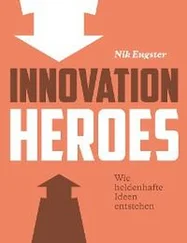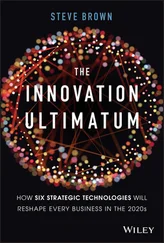In short, change is more difficult the more advantages the situation presents, and the more doubts there are about the viability of a nascent market. Moreover, small companies (including iconic start-ups) or those from other sectors are usually the ones that trigger disruptions. Conversely, supporting (or incremental) innovation is part of an established dominant design. It improves it at the margin, renovates it without fundamentally altering it, and develops while remaining within the constraints of the pathway (Vergne and Durand 2010) that frames it, or even locks it in. One can nevertheless seek to make things smaller, lighter, cheaper, faster, less fragile, while remaining within the framework of the established dominant design and its main performance criteria. It is therefore quite rational for dominant companies in a market to opt for these supporting innovations (Christensen 1997).
As mentioned above, the evolution of practices initially constituted the main part of the research carried out on innovation in the field of sport. Subsequently, analyses focused on product innovations against the backdrop of accelerated technological change. Other types of innovations exist and have also been studied: organizational (Hillairet 2003), service (Paget et al . 2010), process (Desbordes 2001), practice (Rech et al . 2009), territory (Nordin and Svenson 2007), social (Tjønndal 2016, 2017; Coignet 2013) or event-related (Bessy 2013). What these studies have in common is that they focus on cases of proven success, which implies a tendency to produce “seamless narratives of success stories” (Gaglio 2011, p. 3). Little research analyzes failures or unfulfilled innovation trajectories. However, talking about innovation also necessarily means taking an interest in the latter, which in fact constitute the majority of situations and are rich in lessons learned. This is why, in this book, we will focus on both successes and failures, which we prefer to describe as unfinished innovation trajectories or processes.
1 1This dynamism refers to what Gaglio (2011, p. 107) calls an intensive regime of innovation: “the transition, albeit incomplete, from an economy of scale to an economy of innovation, where product differentiation, shorter product lifetimes and a variety of product lines are becoming the norm.”
2 2To learn more about the elements related to disruptive and supportive innovations and dominant design, we would recommend the MOOC La fabrique de l’innovation, coordinated by Gilles Garel and Loïc Petitgirard, both university lecturers and researchers at the Conservatoire national des arts et métiers (CNAM).
1
Theoretical Elements: A Multidisciplinary Framework between Sociology and Management of Innovation
In line with the aim of this handbook, which is to allow a realistic explanation of the innovation processes at work in the field of sport, we shall develop in this theoretical part the main contributions of several approaches from sociology and, to a lesser extent, from socioeconomics and management sciences. The description of these theoretical currents is coupled with another intention: to reflect on how they are structured.
In this regard, a clarification is needed now as to the respective projects of management sciences and economics, on the one hand, and of sociology and anthropology, on the other. If not clearly stated, this sometimes leads to misunderstanding, which can make interdisciplinary dialog difficult. Sociologists and anthropologists have essentially focused on understanding the spread of innovations (whether social, cultural, industrial, political, etc.), their adoption in different cultural milieus, which is synonymous with the transformation of practices and uses. Less concerned with cultural dimensions than with organizational and industrial issues, specialists in management science and economics seek to identify (and, to a certain extent, prescribe) the best way to successfully commercialize a novelty, with a singular focus on technological innovation. From then on, the innovative company, its stakes and the expected return in terms of added value are central (Godin 2017). Appropriation on the one hand, commercialization on the other; although this division is often schematic, it is nonetheless rooted in a certain epistemological reality, even if several theoretical approaches propose going beyond it.
1.1. Classical approaches to innovation
Schumpeter’s thinking has already been mentioned, and it is of great importance in the work on innovation, since the economist has contributed to highlighting the driving role of innovation in economic evolution, including through its paradoxes (Schumpeter 1935). In particular, we owe him the famous “creative destruction” achieved by the novelty that competes with the old to the point of harming it. He drew up categories that are still used today, including that of typology (product innovation, organizational innovation, process innovation, etc.) and degree (difference between major and minor innovation). Above all, he highlighted the decisive action of an economic agent: the entrepreneur. The latter is not necessarily an inventor (or even a company founder), but a creative and persevering actor, capable of reconfiguring both the resources of the organization and the economic circuits (Munier 2013).
This classical approach has the advantage of highlighting the centrality of innovation in the creation of value in the sports sector (see for example (Chantelat 1992)). It allows us to account for the long time span between invention and innovation in many cases. In this respect, it is interesting to note that recommendations from management science and economics generally encourage the acceleration of processes, in order to increase the pace of innovation and, in so doing, the chances of success (Segercrantz et al . 2017). This acceleration, which aims to prevent competition from taking advantage of innovations, is not without ambiguity: the multiplication of destruction cycles can lead to the lasting destabilization of markets.
Above all, it is important to avoid focusing on providential entrepreneurs, on the one hand because the exceptional figure of the enlightened entrepreneur can be criticized as a chimera (Mustar 1994), but also, as we shall see, because it obscures many other actors and factors. This perspective is not self-evident, since we have been used to seeing innovation as essentially the work of avant-garde individuals capable of recombining productive systems. A recent history (Schutt 2012) of the manufacturer Petzl (technical outdoor sports equipment) describes the founder (Fernand Petzl) and especially his son (Paul Petzl) as visionary, determined and driven by a desire to innovate and capable of anticipating new needs and practices in order to reconfigure outdoor markets. While the career paths and sociological or personal characteristics of innovators must certainly be taken into account in innovation trajectories, they cannot be an exclusive explanatory factor for the fate of new products.
This caution is all the more necessary as we sometimes see the individual figure being substituted by that of the organization in studies. Following the example of the visionary entrepreneur, companies with exceptional characteristics (decompartmentalized, learning, hybrid, etc.) are designated as the driving force behind successful innovations. The Salomon company thus appears to be an ideal type of creative, even intuitive, organization, capable of managing uncertainty in order to regularly bring about innovations (Moingeon and Métais 1999; Puthod and Thévenard 1999; Desbordes 2001; Deroy 2004; Bueno Mérino et al . 2010). The Décathlon group – and one of its private labels, Quechua – are in turn analyzed as a hybrid organization capable of combining rational and turbulent processes in the service of effective innovations (Hillairet et al . 2010), in a description that seems somewhat idealized.
Читать дальше












